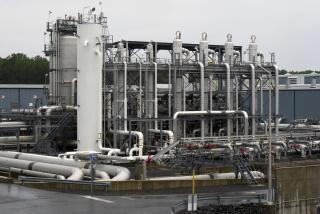Energy Independence Is Not Desirable or Doable
“Let us set as our national goal,” President Richard Nixon proclaimed more than a quarter of a century ago, “that by the end of this decade we will have developed the potential to meet our own energy needs without depending on any foreign sources.” Although President George W. Bush’s emerging energy policy is a lot less utopian, one of its suppositions, too, seems to be that Americans will be better off if they reduce reliance on foreign oil. And his campaign pointed out that, on the Clinton-Gore administration’s watch, dependence on imported oil had “jumped” to 56%. By implication, the increase was ominous because “U.S. economic security is dependent upon foreign energy providers.”
Alas, this critique did not pause to ponder an obvious puzzle. In 1973, when this country imported little more than a third of the petroleum it consumed, why did the economy prove far more, not less, exposed to the shock of rising international oil prices than it did last year when those prices soared while our dependence on foreign oil reached an all-time high?
Economic security is not a function of how much energy a nation produces domestically or buys from abroad. Britain, for instance, produces more oil than it needs. Yet Britain’s self-sufficiency scarcely shielded British consumers from the sudden spike in gasoline prices last summer. The reason: Petroleum prices everywhere are set in a world market, and no country, even a net exporter, can readily repair to an energy policy that says, in effect, “Stop the world. I want to get off.”
More consequential for economic stability than the share of fuel supplied by foreign sources is a nation’s level of energy consumption and susceptibility to inflationary pressures. The United States today is much more energy efficient than it was in 1973. All things being equal, our economy now is roughly half as vulnerable to the effects of energy price increases. The economy is also far less inflation-prone than in the 1970s. Consequently, even the tripling of global crude-oil prices between 1998 and 2000 did little damage.
The quest for energy independence was fanciful in Nixon’s time and would be even more quixotic today. We do not know exactly how much untapped oil remains buried in U.S. territory, but we do know that extracting it will be expensive. Further, while not all these undertakings will despoil wildlife habitats and fragile ecosystems, surely some of the domestic energy development would not be environmentally benign. If the environmental impact is factored in, quite a few of these projects may not be worthwhile. And their value would be further undercut if world market prices collapse again, as they have repeatedly in the past 15 years.
Perhaps there is little risk that the U.S. government would move to protect inauspicious ventures, fending off foreign competition by imposing import quotas or by subsidizing domestic producers through tax preferences or other special dispensations. However, such protectionism occurred in the past.
A reprise of mercantilist practices would only lower American living standards. It is wasteful to insist on producing at home those commodities that can usually be supplied more cheaply from somewhere else. Funneling scarce resources into enterprises in which we no longer have a firm comparative advantage means leaving less capital and labor available to other industries--ones that could put those resources to better use. The result is that society is impoverished, not strengthened, by the pursuit of self-sufficiency.
Apart from its anachronistic rhetoric about foreign energy providers, the new administration’s energy initiative actually has much to recommend it. Certain features would lessen pollution. For example, an emphasis on prudent exploration for natural gas, and on facilitating construction of additional transmission pipelines, is long overdue.
But whatever its virtues, the government’s energy planning will do precious little to curb the country’s reliance on foreign oil. This reality poses its share of problems, but the least of them is that our cars are fueled not only by wells in Alaska and Texas but also by the exports of a diverse assortment of trading partners around the world.
More to Read
Sign up for Essential California
The most important California stories and recommendations in your inbox every morning.
You may occasionally receive promotional content from the Los Angeles Times.










